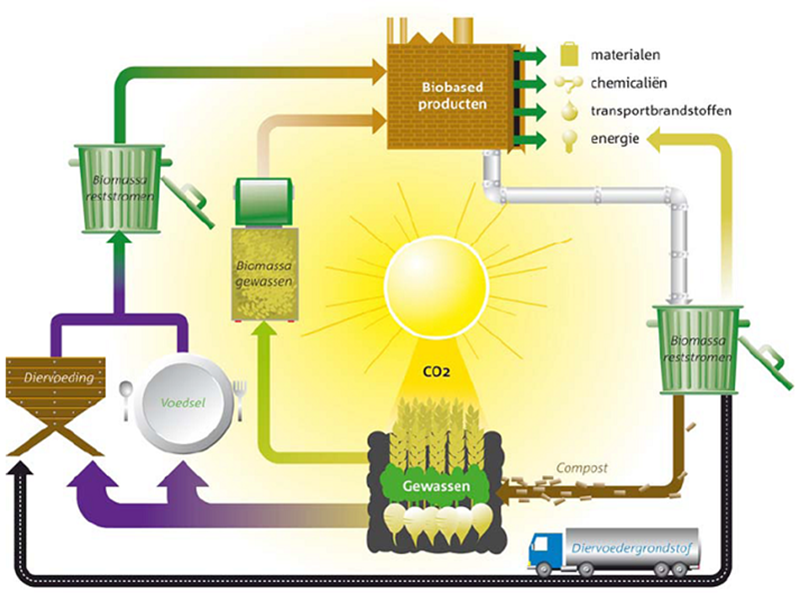Welcome to the world of renewable resources
The Biobased Economy is a term that we use to indicate that biomass is used for the production of materials, products and energy, instead of fossil raw materials. Until the beginning of the 19th century, we all lived in a biobased economy. After all, large-scale extraction of fossil resources was not yet an issue, let alone extracting energy and valuable materials from those fossil resources. Today, CoE BBE and many others are working hard, for a variety of reasons, to return to the Biobased Economy.
Hernieuwbare grondstoffen

Biomass as a raw material is therefore what the Biobased Economy is all about. This biomass can come from residual flows from, for example, agriculture or the food industry, but can also be grown specifically for use in biobased energy, materials, chemicals or transport fuels. In order to ensure that the used raw materials grow back again, sunlight is needed, and it is necessary to close three cycles, which are referred to below. It is important to remember that biomass does not only come from agriculture, but also from forestry, horticulture and aquaculture.
- Carbon cycle – crops grow by uptake of atmospheric CO2 and this is released again in the processing phase or the ‘end of life’ phase. There is no fossil energy carrier and therefore there are no emissions of fossil CO2
- Nutrient cycle – to grow crops need nutrients (nitrogen, phosphorus and potassium). By using animal manure or human manure on agricultural and horticultural land, nutrients are made available again for new crops and the soil does not deteriorate
- Water cycle – water is extracted from the soil and must be returned in the form of rainwater or watering to prevent drying out
Strictly speaking, the carbon cycle is also closed for fossil raw materials. The difference is that in the case of biomass this happens via the air and not via rock, ores or minerals. The period of closing the cycles varies from case to case. Some crops are harvested annually, but trees, for example, are also counted as biomass, where the cycle can last for decades.
Food vs. Fuel
In the recent past there have been discussions about whether we should now use agricultural land for the dedicated cultivation of crops for biofuels (but also other raw materials for the Biobased Economy), the so-called food versus fuel debate. Recent studies indicate that, even with an increasing world population and an increasing demand for biomass for the Biobased Economy, there are more than enough areas available for the combined demand.
Sustainability in a broader sense
Is the Biobased Economy, with its focus on the transition from fossil resources to renewable resources, now the only and comprehensive solution to today’s challenges? Certainly not! CoE BBE sees the Biobased Economy as an important partial solution, but more needs to be done. Prevention is easier than cure, which means that a focus on unnecessary or inefficient use of materials or energy is necessary (see also: Trias Energetica (Duivestein) and the R-ladder (Cramer, 2014).
Biobased Economy is often referred to together (and even confused with) the Circular Economy. We explain the similarities and differences between the two terms here.
Also interesting
Our Wiki pages are continuously updated, and new pages are added all the time. Are you missing a page, or do you want to respond to this page? Then press the button below:
